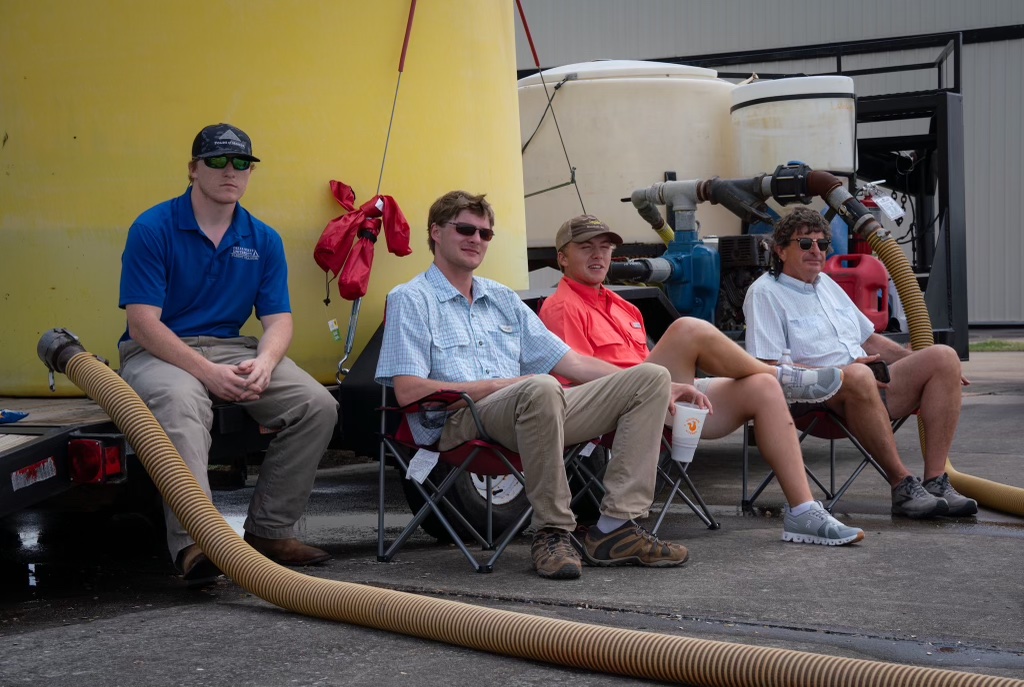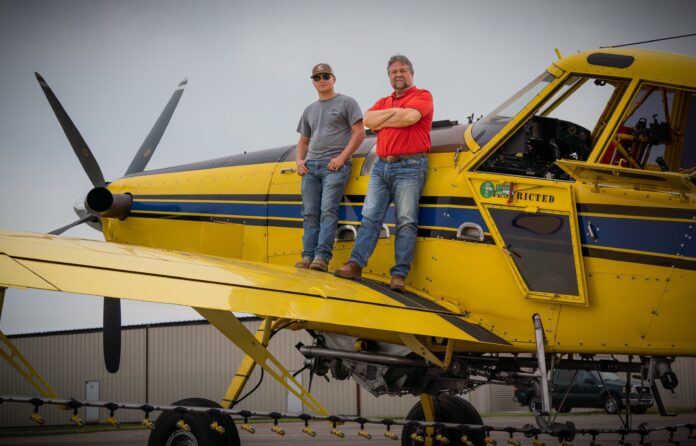One of the largest obstacles our industry faces is the number of available pilots and qualified people interested in learning what it takes to become an ag pilot. This past fall and winter, while at various state ag conventions, the number of operators looking to hire pilots was astonishing. It was apparent in the different Facebook groups and online forums everywhere you looked that operators nationwide were looking to fill seats. It is no surprise that the day has finally come when it seems more seats are open than competent pilots can fill them.
Our industry grew so fast and at such a rapid rate, one might say that it is on the cusp of potentially outgrowing itself. More than ever, our nation depends on agriculture, which depends on all ag pilots’ daily work. The need for bigger aircraft increased due to an increased demand for crop protection services offered by ag operators. Bigger equipment meant higher sticker prices, which translated into higher insurance costs. Higher insurance costs led to more requirements to become insurable, making it difficult for new pilots to obtain a seat.

The need for more pilots has been higher than ever in recent years, and with that need has come the obvious question: “Where are the next generation of ag pilots going to come from? Who is going to teach the new generations of pilots? How will they be taught, and what resources will be utilized to help better prepare the next era of pilots?”
Our industry has had a perpetual need for an aerial application training program that helps achieve the rating and provides real-world scenarios, advanced training, and preparation for an aviation career. Options for an advanced agricultural aviation-centered training program have been very limited throughout the course of history in our industry, let alone one that truly offered an opportunity to utilize state-of-the-art technology, modern equipment, and hands-on training by experienced and well-versed personnel. Such a program now exists and can be found at Delta State University in Cleveland, Mississippi. The Ag Pilot Training Program is one of the only programs to have access to some of the most crucial resources, and among being the first to offer a wide array of training tools, Chem-Man happens to be one of them.
During my visit to the university, I was asked by George Moore, the lead instructor in the aviation program, to present a synopsis of Chem-Man and a training session to the students enrolled in the program on some of the many features Chem-Man offers. Moore is an integral part of curriculum development within the ag program and was a user of Chem-Man in years past.

Through his experience using Chem-Man, he could see how crucial it would be to introduce the next crop of soon-to-be ag pilots to the many things that Chem-Man can do. George, who boasts an impressive resume of industry experience, first used Chem-Man while working for the Sturdivants (now Due-West Crop Services) in Minter City, Mississippi. George was called upon to return to the Mississippi Delta in the summer of 2017 when the Sturdivants lost their sole pilot in a tragic accident.
George stepped in to fill the void after the accident, which was in the heat of the growing season. Even though George is a Cleveland native, he found himself in unfamiliar territory. He had been away from home for over 20 years while working in Colombia for the State Department in the narcotic control program and flying an Air-Tractor 802 Fire Boss fighting fires.
George explained that Chem-Man was vital in orienting himself where he needed to go by creating maps, generating shapefiles, and managing the workload. Within George’s 30+ years flying career, his many years flying a dual seat 802 in Colombia and an Air-Tractor 802 Fire Boss made him the perfect candidate for instructing in the dual seat 802 where students within the Delta State Ag Training Program get 10 hours of turbine time. Along with the time spent in the two-seat 802, students will find themselves in several different aircraft leading up to the milestone of mastering the 802.
The students enter the program having already achieved their private pilot rating and 100 hours of tailwheel time. Once students arrive, they begin their training by flying an AgPilotX light bar equipped with Citabria and Scout, where they receive 30 hours of light training and basics. From there, they will get the full stick and rudder boot camp while learning to master a 220 Stearman and achieve their high-performance sign-off. After the time in the Stearman is complete, the students will then move on to several hours in a Cessna Ag-Truck where, once mastered, they will then transition into the dual seat Air-Tractor 802 equipped with a Satloc G4, where they will receive 10 hours of dual instruction.
While the flying aspect is an important part of the program, the ground course is equally, if not more important. George believes that within flying ag, the job is 30% flying, 70% spraying, and ag-centered critical thinking. With that being said, they have molded the course to have a major emphasis on knowledge-based experience pertinent to flying ag.
During the ground course, students will learn how to calculate and figure loads. They will also get hands-on training assembling a collection of spray gear and nozzles, configuring it with an aircraft, calibrating the nozzles, and adjusting their swaths and spray patterns. Dr. Dennis Gardisser lent his time to the program earlier this spring to discuss the intricacies of pattern testing with students and even hosted a spray clinic.
The students will use Chem-Man free of cost to the school to create work orders, assign recipes, build maps, generate shapefiles, and upload the “as-applied” information. Using Chem-Man as a tool in the ag training program at Delta State helps introduce the students to the nuances of entry-level pilot positions, such as fall timber fertilizer spreading or summer fungicide applications on corn in the Midwest. Both areas in the ag aviation industry require flying largely dependent on using shapefiles for target area identification in spray applications.
One of the other tools the program will offer soon that is revolutionizing the training curriculum is a state-of-the-art Air-Tractor simulator. The simulator will be able to offer GPS training, lightbar training, and spray simulations. It features a landscape in 4K resolution and virtual reality technology that will be so defined that you can see the difference between different types of crops.
A pre-requisite to become enrolled in the program at Delta State is that each student must have a sponsor who is an ag operator who not only vouches for the aptitude and capability of said student but who has also pledged an investment in either presenting an opportunity in a flying career or offering assistance in job placement. The students will also need at least one year of ground experience working for an ag operation. Among the students enrolled in the program, 90% are affiliated with an operation currently using Chem-Man. We believe that the exposure to Chem-Man during the course curriculum will give the students an advantage within the company they currently work for to show their employers how they can get more out of their current Chem-Man subscription.
Ike Brunetti, George Moore, and Brad MacNealy have set the bar high within the ag training program at Delta State. Our industry owes gratitude to the folks behind the program for ensuring that more ag pilots can enter the industry and continue the legacy of the many great ag pilots before them. Having the opportunity to attend an ag school in the past that is no longer in operation, I am excited to see what the future holds for the Delta State program. Our industry desperately needs a new generation of ag pilots who have gone through the best options available to prepare them for their chosen careers better. Everyone, including myself at Chem-Man, is thrilled to be an integral part of the Delta State training process to mold our industry’s future aviators better.





